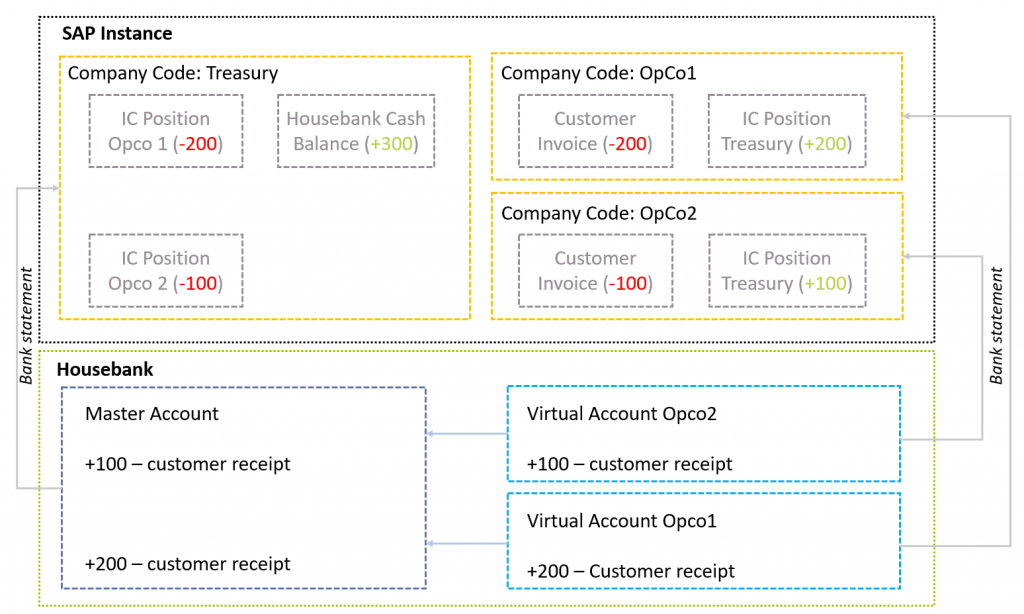The importance and benefits of delivering a digital strategy for treasury operations are well understood. For many organizations, however, there is a significant barrier that may prevent them from being able to successfully implement. In this article, we discuss how to overcome that barrier, resulting in an accelerated process to achieve a true smart treasury function at lower overall cost.
As discussed in the recent joint-whitepaper from Zanders and Citi on the future of corporate treasury, both corporations and financial institutions should be focusing their attention on developing a digital treasury strategy. This is being driven by the increasing pace of regulatory change, continuously evolving business models, volatile economic conditions, fast-growing technological developments and the benefits of a strategically focused ‘smart treasury’ – one that utilizes the latest technology to be more integrated, automated and optimized, adding value to the business.
Although the benefits of going digital are well recognized at a company level, they are not at the treasury level – while two-thirds of respondents to a digital preparedness survey indicated their organizations are already engaged and experimenting with digital solutions, only 14% had a digital strategy in treasury.
Strategy void
We know the levels of adoption of a digital treasury strategy vary greatly between organizations – at the top end of the scale, a number of trailblazers have already developed theirs and are actively implementing, firmly on their way to achieving the smart treasury vision. These are normally financial institutions and large multinationals who utilize in-house technology teams containing a pool of resources dedicated to treasury technology and digital transformation. They may also have ample means to utilize external advisors to deliver on their behalf.
A void exists, however, comprised either of corporates that are yet to transform from traditional MS Excel-based methods to an ‘efficient treasury’ function, or those that have already traversed the transformation pathway but are unable to progress further to ‘smart’.
For those yet to progress to an ‘efficient’ function and realize the benefits of centralization, standardization and automation, getting the basics right is the first hurdle to overcome before digital transformation can be considered. To do this, they should look to select and implement a treasury management system (TMS) and, where appropriate, run a fully operational in-house bank and payment factory. However, in this scenario, the size and scale of their business makes it unlikely that in-house teams with the requisite knowledge and skills to do this exist, and the cost of external advisory projects can be prohibitive. Their barrier is one of having the right structure and resources in place.
For those that have already traversed the treasury transformation pathway and are experiencing the benefits of their new ‘efficient treasury’ function, such as improved cash management, reduced transaction costs, standardized processes and increasingly effective risk management, ‘smart treasury’ is the natural next step. But they also face similar significant barriers in developing and implementing their digital treasury strategy to those struggling to progress to ‘efficient’ – the lack of in-house teams and no budget for advisory projects. Once again, the issue of structure and resources is the barrier.
Progressing through efficient to smart
In our discussion of the aforementioned joint-whitepaper, Ron Chakravarti, Citi’s Global Head of Treasury Advisory, commented: “Today, more than ever, the treasury function needs to include people who are technologically savvy. People who are able to comprehend what is changing and how to best deploy technology… Treasury teams recognize that they need to have a digital strategy, but many of them are not fully equipped to define one.”
Looking more closely at the current team structure of corporates that struggle to achieve their efficient or smart aspirations, it is clear they either have difficulty in finding technologically savvy people, or this requirement is simply being overlooked. The ways that organizations try to respond to the resourcing challenge varies. Some choose to divide the role among existing team members, others merge the requirements into an existing role, and in some cases a dedicated treasury systems manager role is created.
However, none of these solutions are optimal, as to effectively deliver digital change the following niche set of ‘digital treasury’ skills are required:
- Intricate knowledge of the business coupled with detailed working and technical knowledge of their treasury operations and a strong understanding of corporate treasury principles in general.
- Well versed in the latest technologies on offer, and any future technology in the pipeline, that could be effectively utilized by the organization based on their current and future needs.
- Practical experience of implementing and integrating a variety of new digital technologies, combined with strong general IT skills and awareness.
Finding the right resource in a niche market is a challenging one and finding a solution to overcome this becomes critical to moving forwards. We propose a way to remove this barrier and deliver a digital treasury strategy in a lean and cost-effective way, while opening the door to a multitude of further opportunities and benefits for your new ‘smart treasury’ function.
An alternative way to manage your treasury systems
The creation of a dedicated treasury systems manager role appears to be the best of the current solutions to the resourcing barrier, but in practice this is a difficult role to fill due to a trade-off between cost and experience. How can organizations find a senior resource not only with strong experience and understanding of treasury, but with excellent knowledge of the latest treasury technology trends, experience implementing them, and a network of other financial technology professionals on call to resolve issues and propose new ways of working?
One solution may be to form a treasury technology partnership with a third-party, who will assume all day-to-day treasury systems management tasks while defining and delivering the digital treasury strategy. This suggestion is not the costly advisory solution previously mentioned that can be prohibitive for corporates struggling to transform. Contrary to expectations, there are savings to be made and other significant benefits to be enjoyed when a treasury technology partnership is compared to employing a dedicated treasury systems manager.
Treasury technology partnership benefits
Cost reduction – your partner will be able to perform the day-to-day treasury systems management service at lower cost than an in-house treasury systems manager. This is because it can be delivered by a pool of dedicated systems admin staff, allowing the benefits from economies of scale to be realized. The quality of service would also improve based on the collective knowledge of the partner, who will also be managing the same systems for other clients.
Accelerated strategy – your partner will be uniquely placed to define and deliver your digital strategy quicker than can be achieved by the treasury team or a stand-alone systems manager. They would be able to achieve this by applying extensive company-specific knowledge gained during the partnership, along with their awareness and experience of the latest technology. They will already have solutions for common treasury issues and will be supported by their in-house team of treasury technology professionals.
Additionally, the accelerated strategy could be delivered at a lower cost than any discrete transformation advisory project, as the technology partner would benefit from already having a strong understanding of your business’s strategic and technical requirements. Time spent on scoping would be vastly reduced.
Ad-hoc – for similar reasons to the accelerated strategy, the treasury technology partner would also be able to deliver ad-hoc projects at a much more reasonable cost than engaging in an advisory project. Tasks such as systems selections, technical changes required by regulatory changes, market reform or adjustments in generally accepted best practice, could be delivered swiftly as the technology partner would already be experienced in delivering these for other customers, while also being aware of your specific technical requirements.
Exponential technology – the use of a treasury technology partner will open up the possibility of always being able to deploy the latest technology. For example, Zanders are already experienced in delivering technological improvements utilizing robotic process automation (RPA), machine learning (ML), artificial intelligence (AI), external and internal APIs, custom applications/middleware, and a multitude of other exponential technologies. The technology partner will already be experienced in the design, implementation and use of these with their other clients, and will bring significant experience in how to deliver these, in conjunction with their understanding of your organization’s strategic and technical requirements.
Summary
Zanders has a wealth of experience in this field with numerous awards and recognitions for our technological solutions, and already performs similar services for several organizations. Entering into a Zanders Treasury Technology Partnership to deliver your first steps to an efficient treasury, perform day-to-day systems admin tasks, and develop and implement the digital treasury strategy, is an ideal solution for those corporates lacking the appropriate resources to move from ‘efficient’ to ‘smart’.
Moreover, it gives an organization access to a pool of treasury professionals at all levels of seniority, to continuously benefit from their collective experience and skills. This expertise is available at a lower cost than the alternative of employing an in-house treasury systems manager or engaging in advisory projects. For cases where the current systems admin tasks are merged into one or several existing roles, it will allow core treasury team members to focus on treasury management by removing the burden of systems management placed upon them, while also improving the quality of the systems management service.
Finally, it opens up the possibility of greater use of a multitude of exponential technologies, all resulting in cost savings, increased operational efficiencies, improved risk management, and a technology landscape that is scalable and rapidly deployable. This will ensure you achieve your smart treasury vision for a function that is well placed to support your business going forward.







































